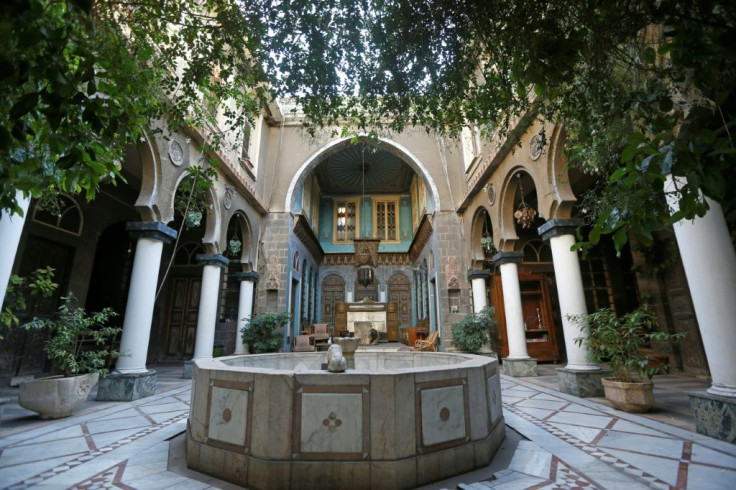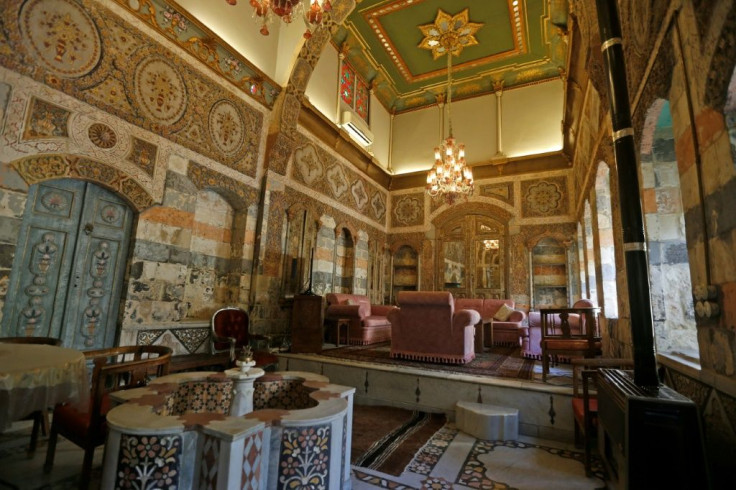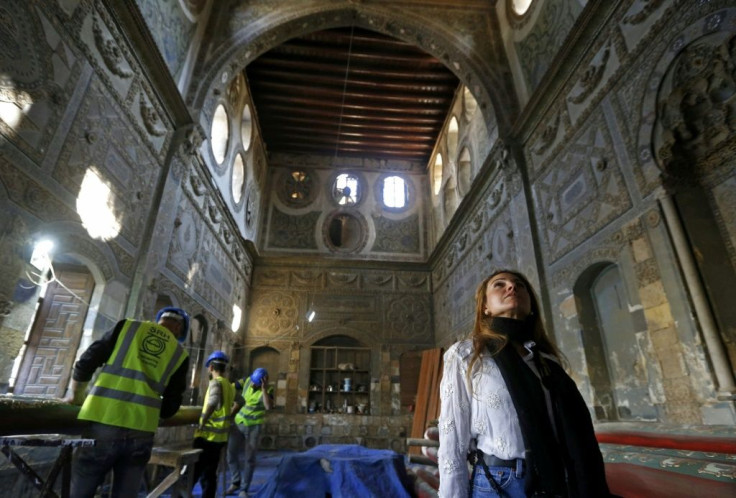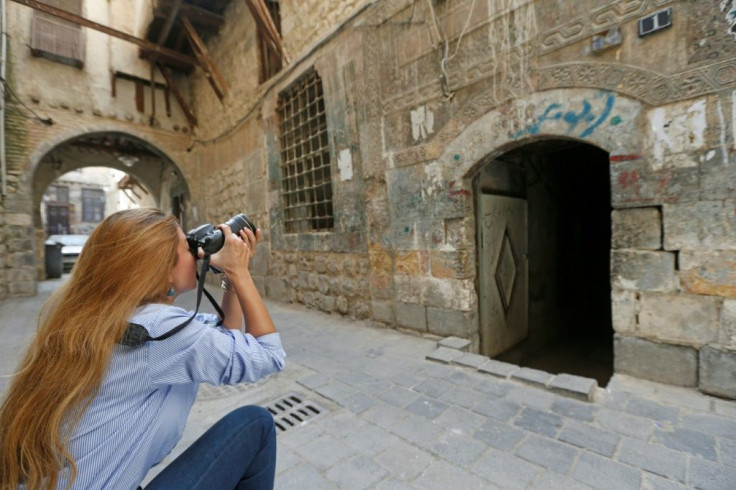Syrian Archives Images Of Damascus Homes To Preserve Them
Strolling through the alleyways of war-torn Syria's capital, Rania Kataf snaps photos of the city's famed houses, capturing their nooks and crannies for posterity.
After seeing how vulnerable they had become during the country's devastating civil war, the 35-year-old began creating a digital archive of the buildings of Old Damascus.

"I was inspired by European photographers who tried to document buildings in their cities during the Second World War so architects could later rebuild part of them," she said.
The old city of the Syrian capital is famed for its elegant century-old houses, usually two storeys built around a leafy rectangular courtyard with a carved stone fountain at its centre.
Their many rooms usually include both a summer and a winter guestroom, both looking onto the courtyard.

While the capital has been largely spared the violence of Syria's almost 10-year war, several of these traditional homes have been abandoned by their owners or damaged in the conflict.
Some have even become home to families displaced by the fighting, who have settled in their high-ceilinged rooms and sometimes made slight alterations to their interiors.
In 2016, Kataf created a group on Facebook called "Humans of Damascus", to which more than 22,000 Syrians from the capital have sent in photos of their homes.

"You don't need to be an expert to document something," she said.

Already her pictures are proving useful in restoration efforts.
Inside a palatial Ottoman-era home called Beit al-Quwatli, Kataf painstakingly captures shots of each section of an ornate wall, then scribbles in her notepad.
The building once belonged to the family of Syria's first post-independence president, Shukri al-Quwatli.

Part of the home collapsed in 2016 after rebel rocket fire nearby cracked its walls, but today the authorities and private partners are sprucing it up to turn it into a cultural institute.
In a large hall, workers in yellow vests and blue hard hats dust off long beams painted in dark green and gold, propped up on trestles.
Kataf's pictures of surviving features of the building will help as a reference as they repair the damage.

In 2013, UNESCO decided to add all six of Syria's World Heritage sites, including the Old Cities of Damascus and Aleppo and the ruins at ancient Palmyra, to its World Heritage in Danger list.
Kataf, who studied nutrition in Lebanon's capital Beirut, said she was spurred into action after seeing the conflict damage or destroy architectural gems elsewhere in Syria.
"I was scared the same would happen to Old Damascus, so I started to document as many of its details as I could," she said.
Rebel rockets fell on Damascus in the early years of the war, but the guns have largely fallen silent since government fighters expelled the last rebels and jihadists from the city's outskirts in 2018.
The "Humans of Damascus" project has continued, however, with many photos posted on the Facebook group and others stored by Kataf, who makes them available to researchers on request.
Today some buildings are still at risk of "losing their identity because of money-making projects, or becoming neglected and forgotten after their residents emigrated," Kataf said.
But Raed al-Jabri, sitting by the fountain inside his home-turned-restaurant, said he has done all he could to preserve the building's original beauty.
"We were going to lose the house completely. It was about to collapse and was in desperate need of repair," the 61-year-old said.
He converted the house into an eatery in the 1990s, investing his profits in the building's upkeep.
"A Damascus home is not just for its inhabitants," he said, reminiscing about better days before the war, when tourists flocked to the city.
In another part of the Old City, 50-year-old businessman Sameer Ghadban said he was proud to still live in what was once the home of a famous 19th-century Algerian who had resisted the French occupation of his homeland then sought refuge in Syria until his death.
"My wife and I have been living here for 12 years, on the very spot where Emir Abdelkader did," he said.
During his time in Damascus, Abdelkader is credited with saving thousands of Christians from sectarian violence in 1860.
Ghadban said he has strived to preserve the building's uniqueness down to the very last detail, however much it costs, in honour of those who lived in it before him.
In a small summer living room open onto one of the house's two courtyards, the walls are covered in intricate carvings, including verses from the Koran, under a painted wooden ceiling.
"I feel like I live in a museum," he said. "I will never be able to live in a normal flat after this."
© Copyright AFP 2024. All rights reserved.





















